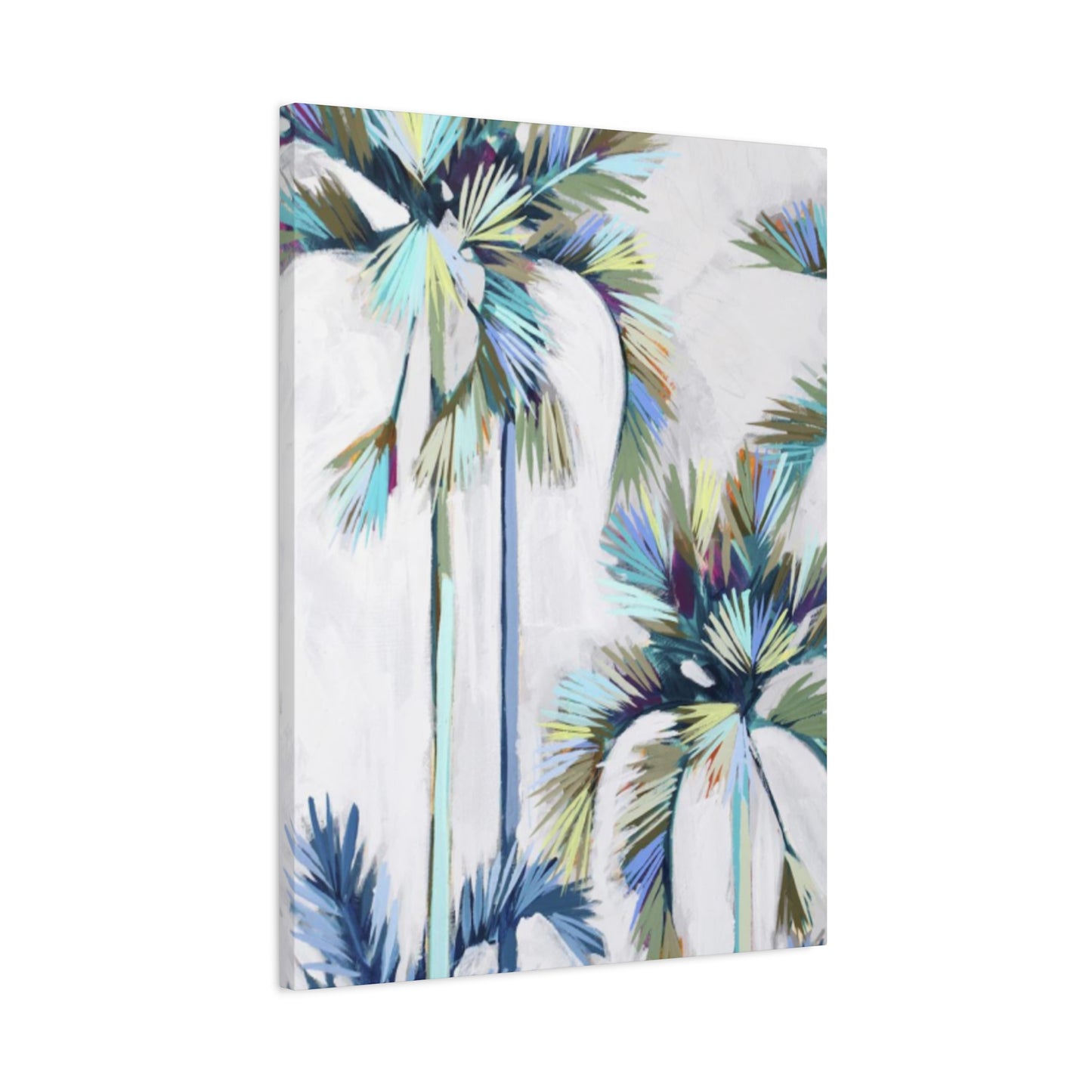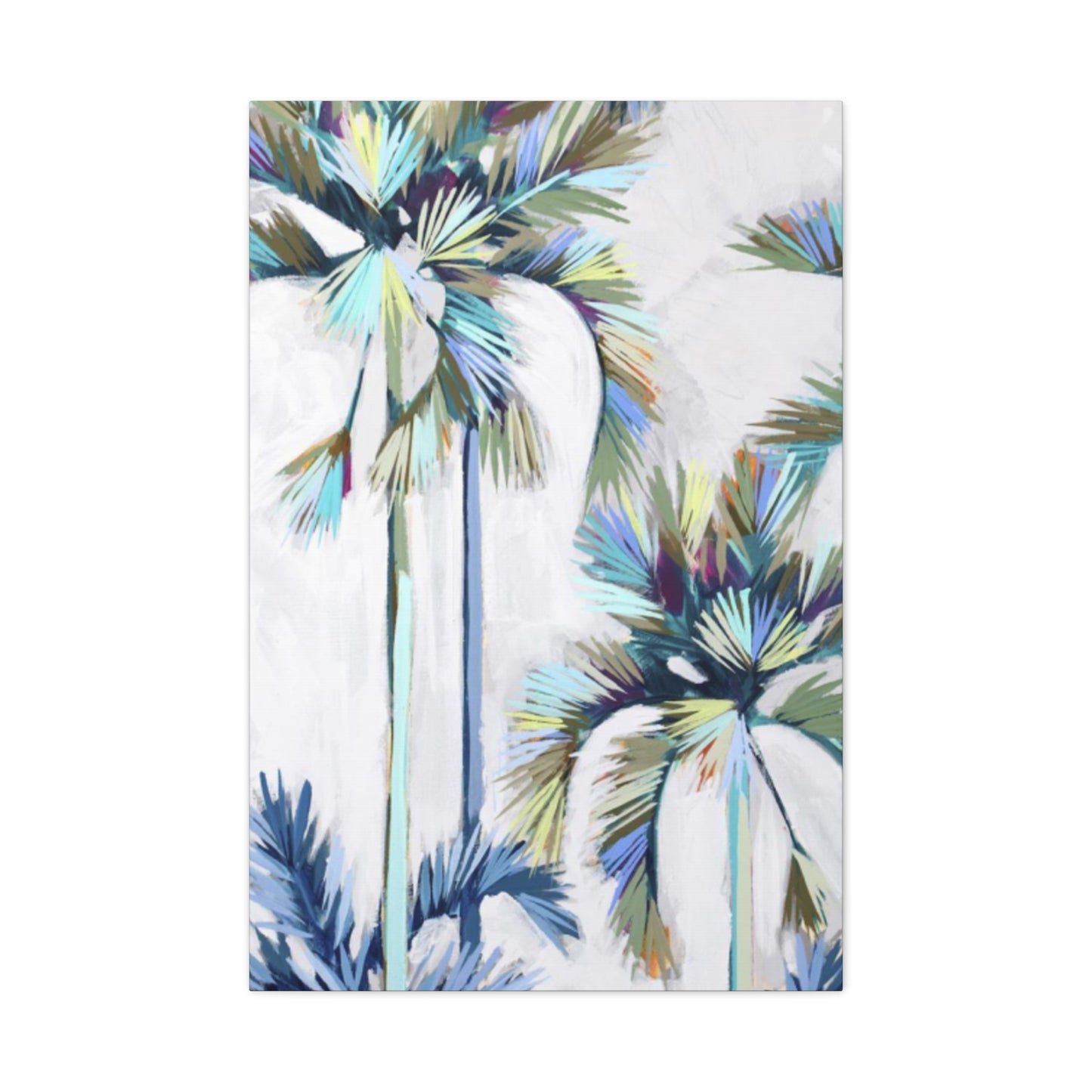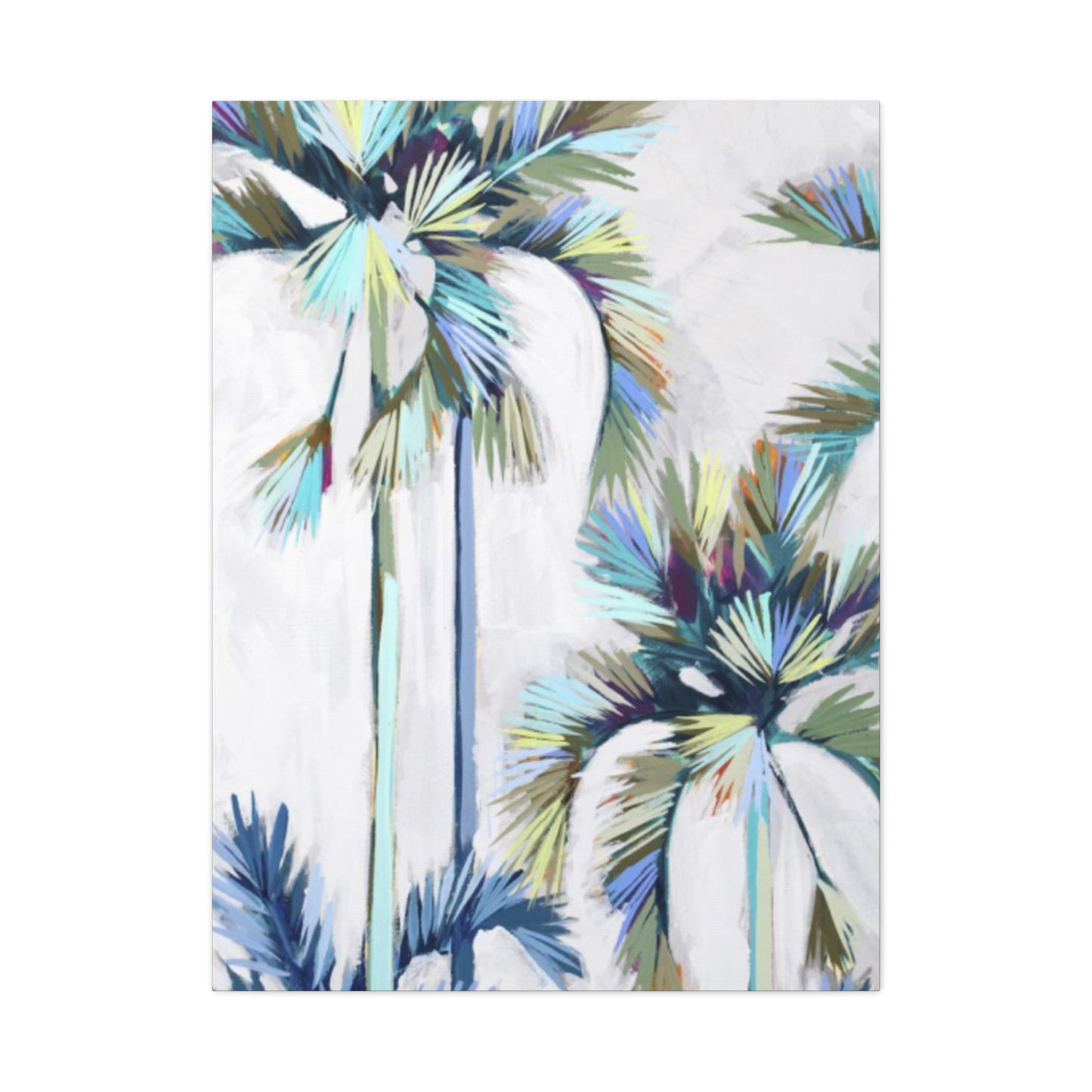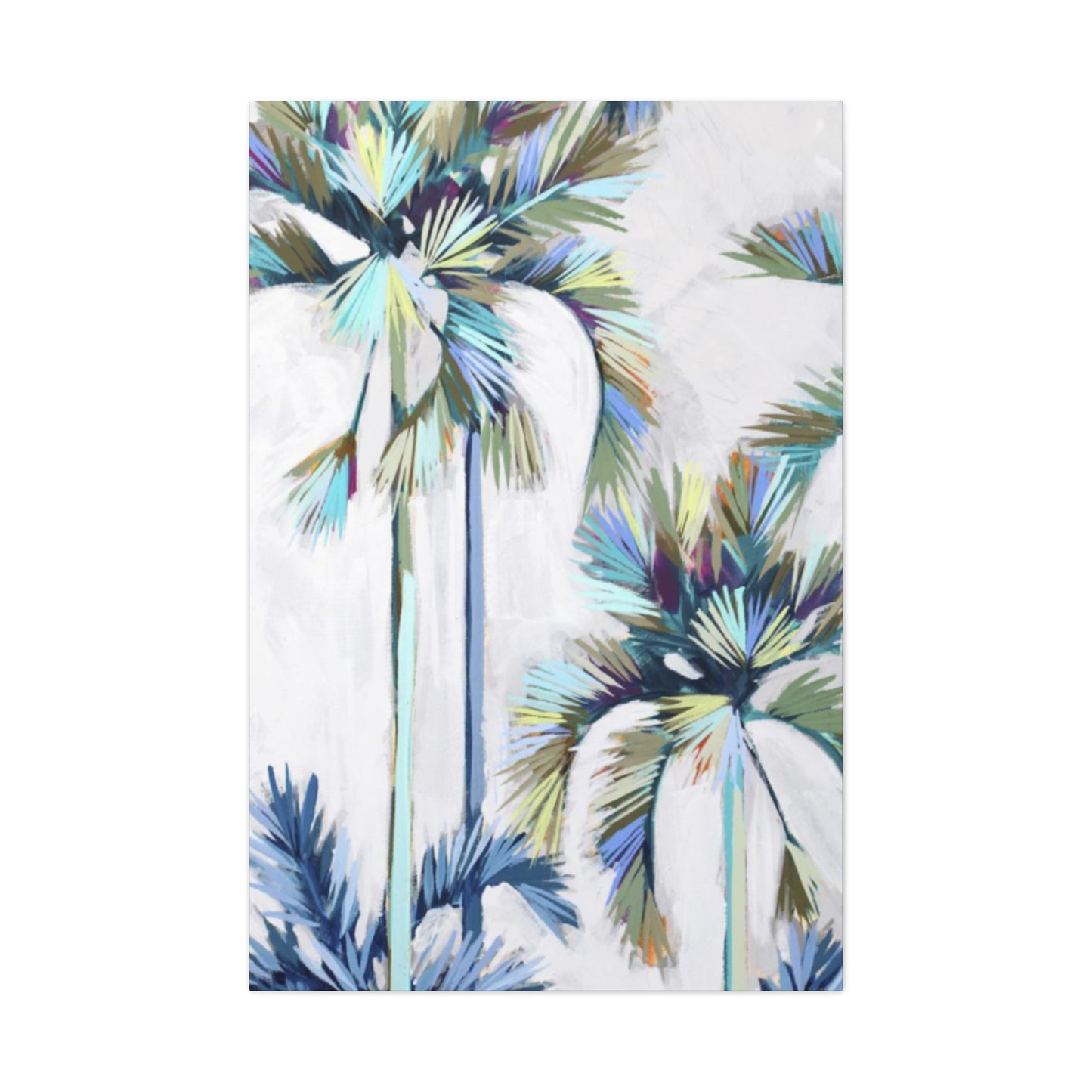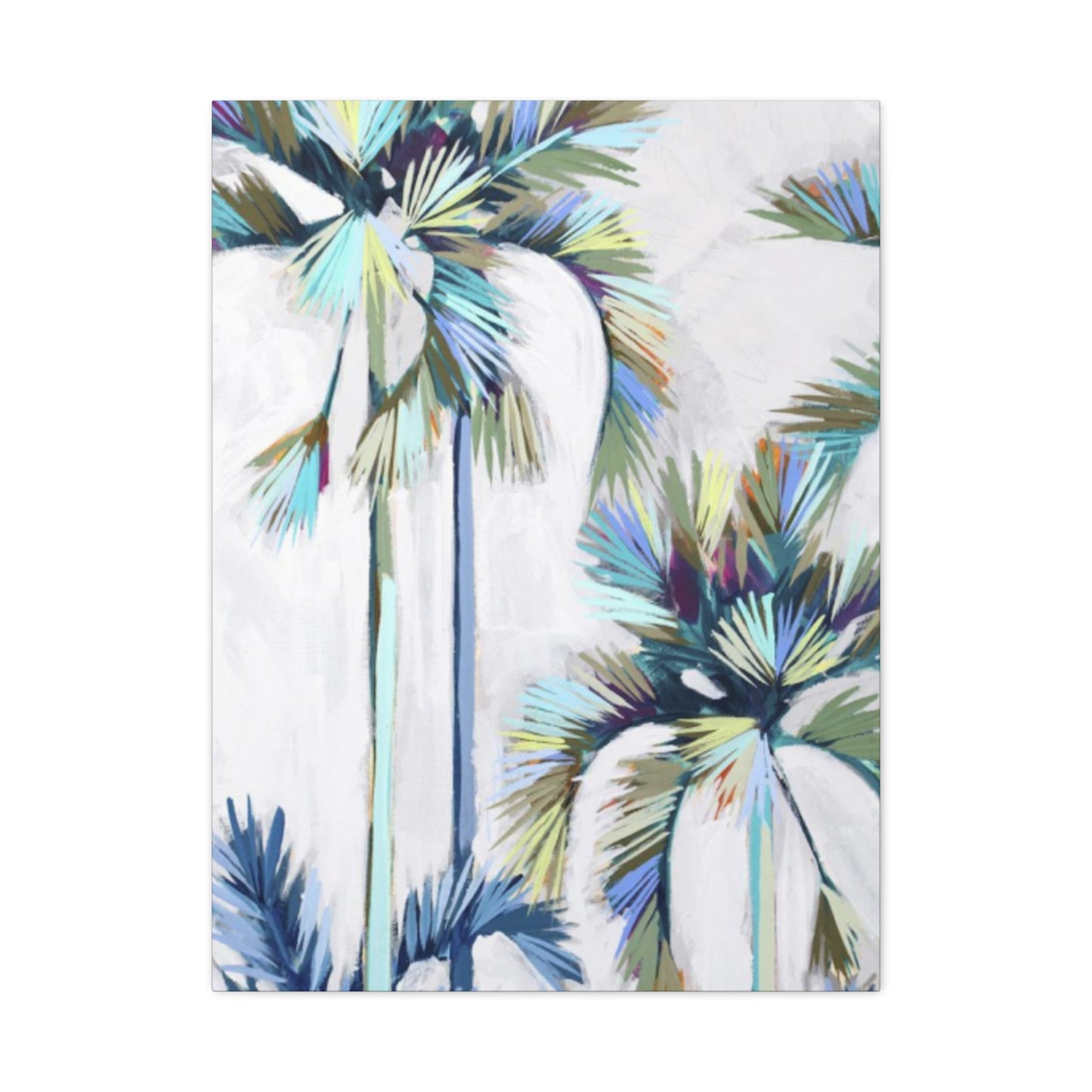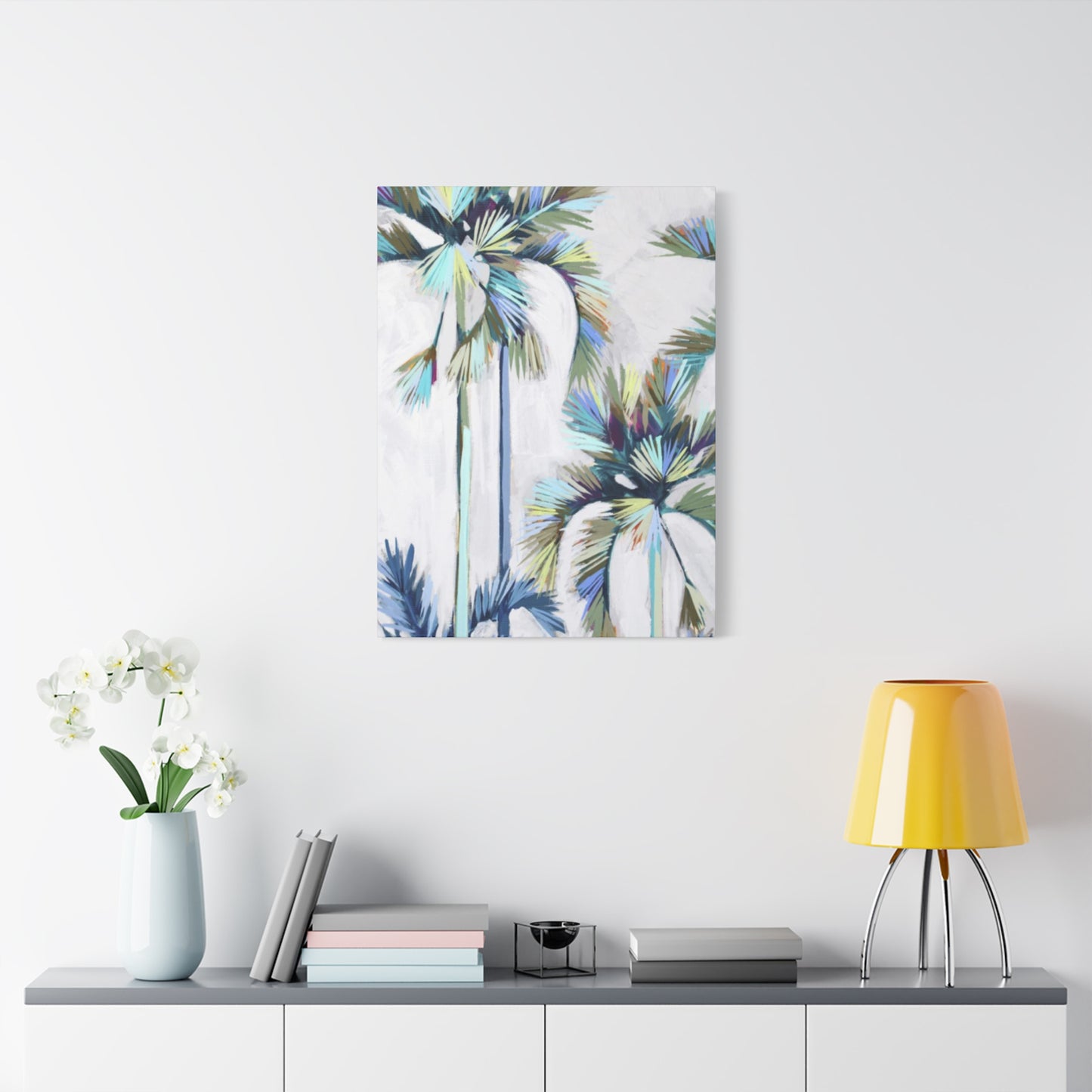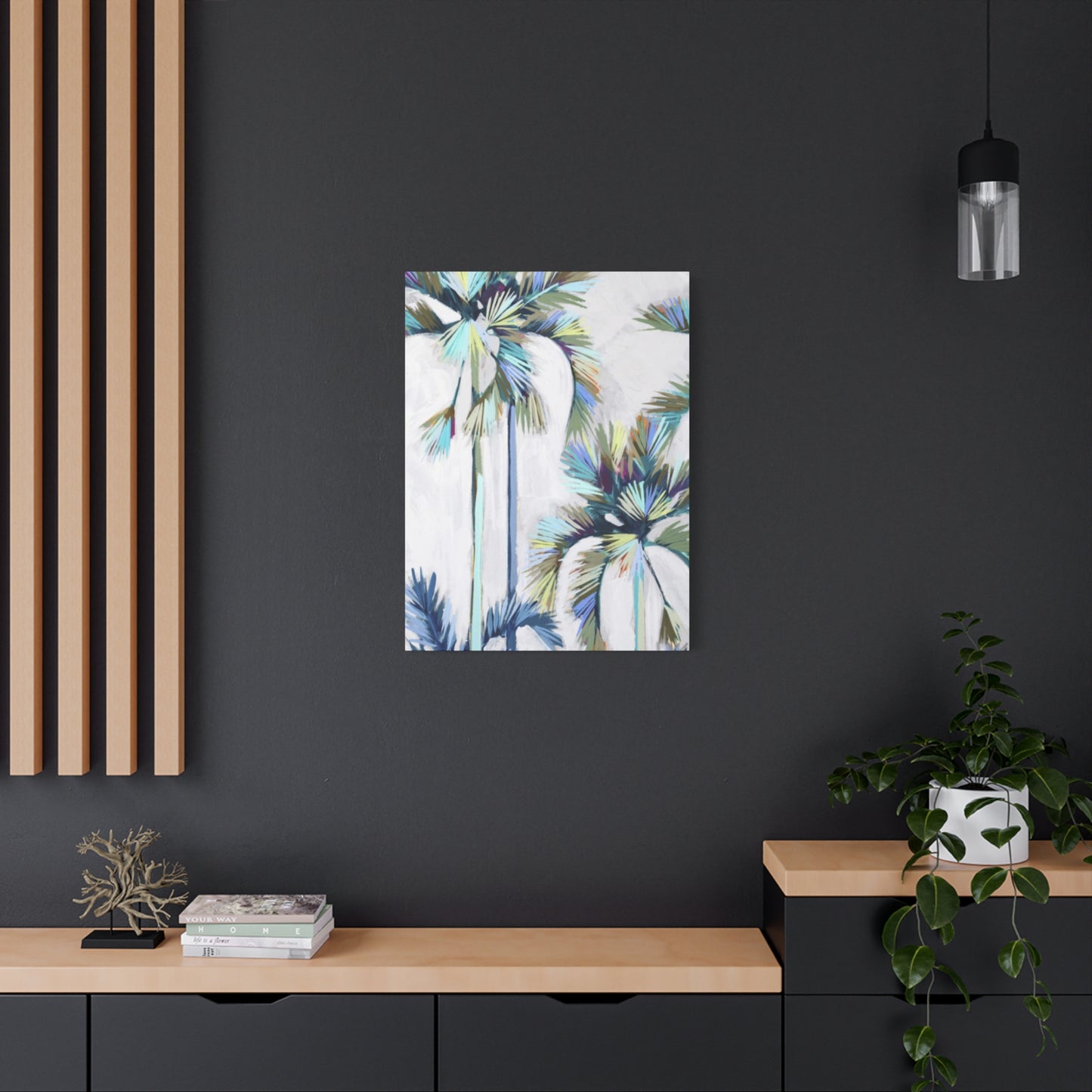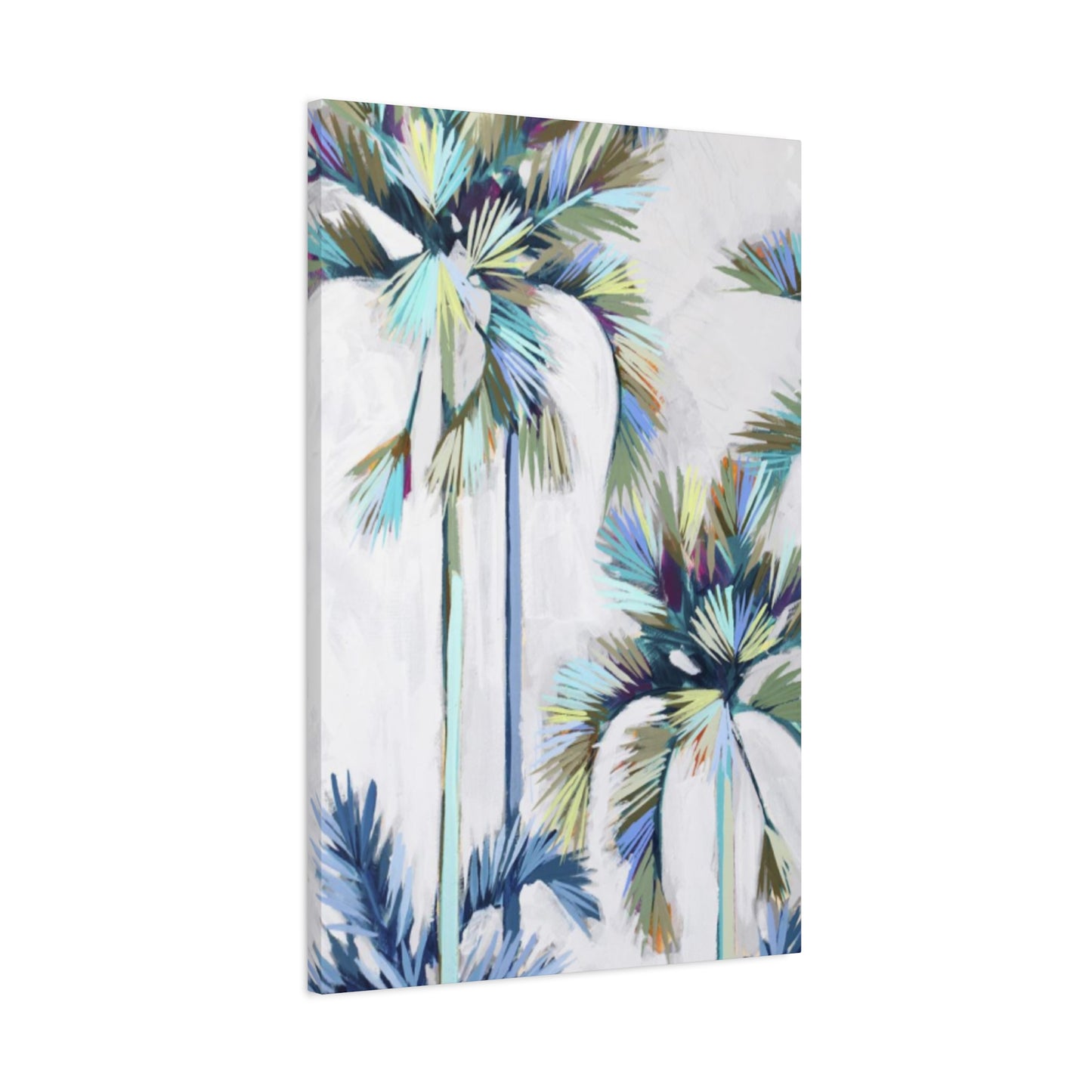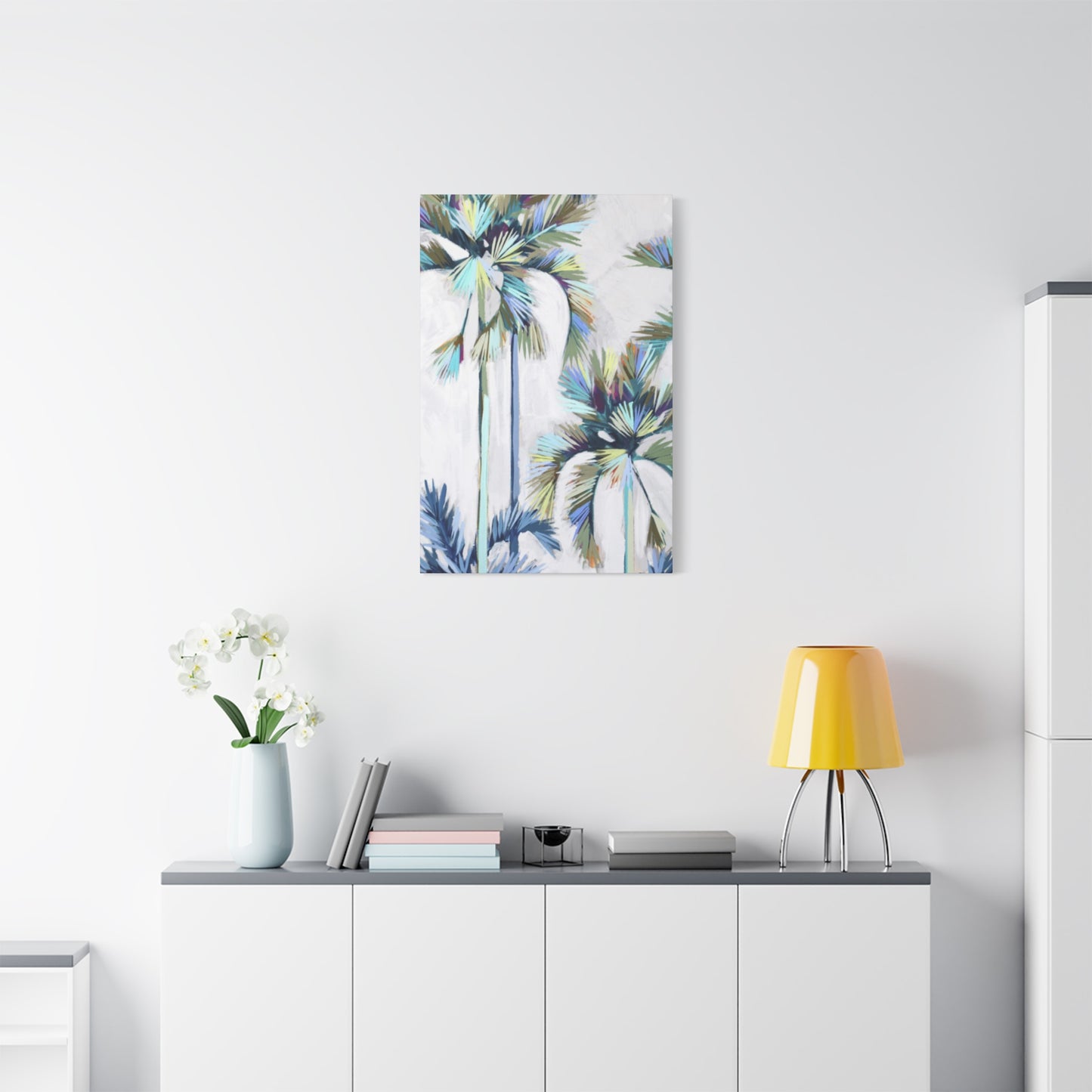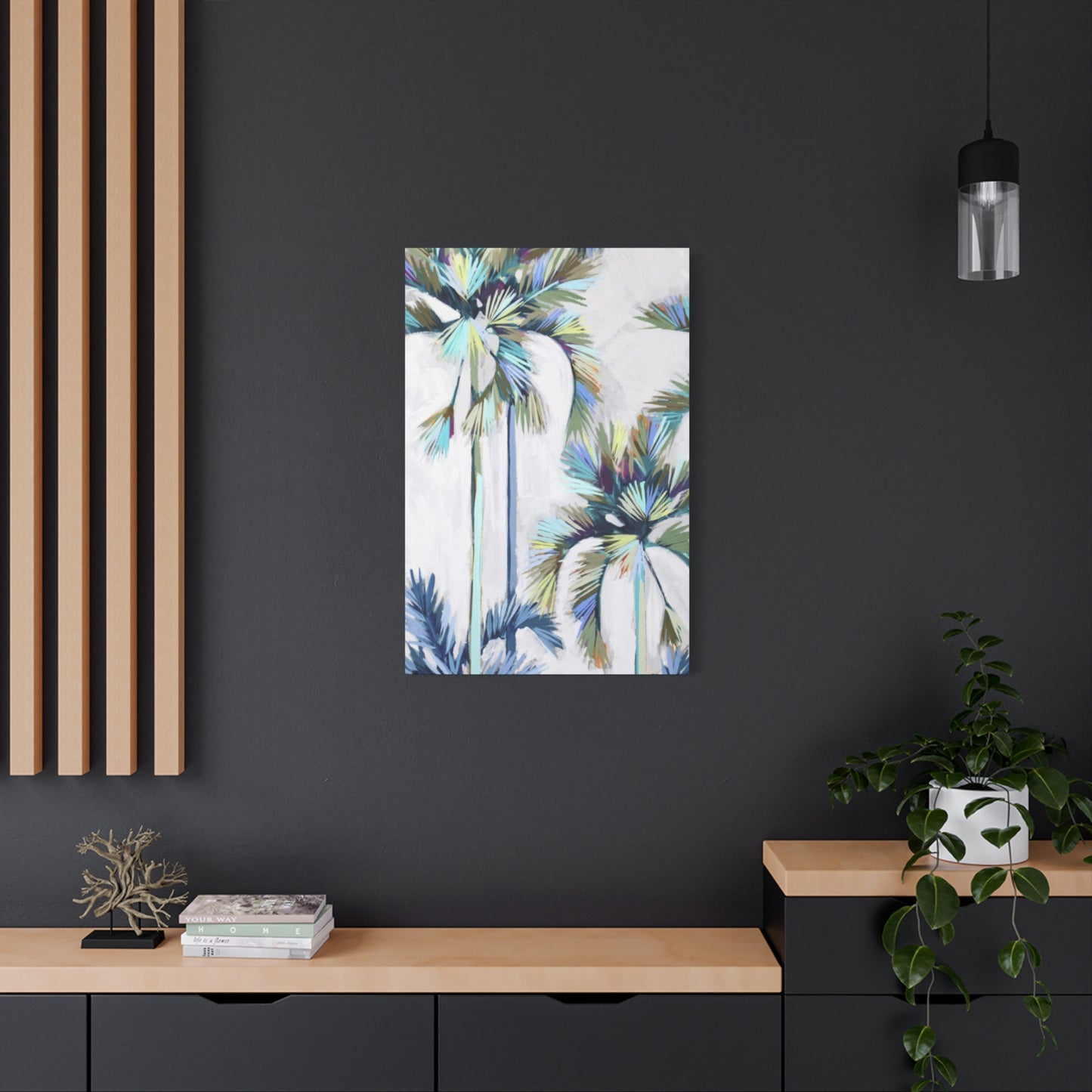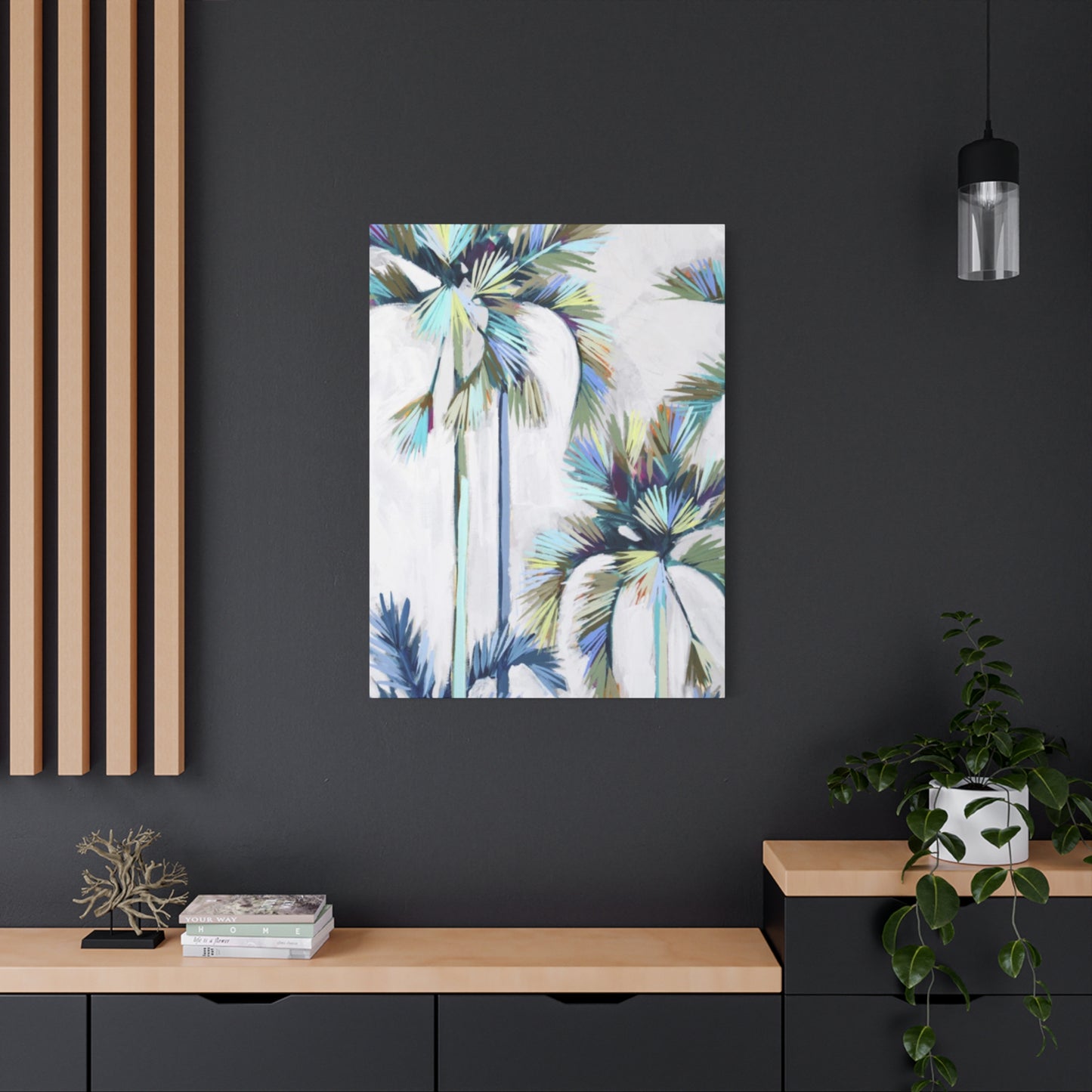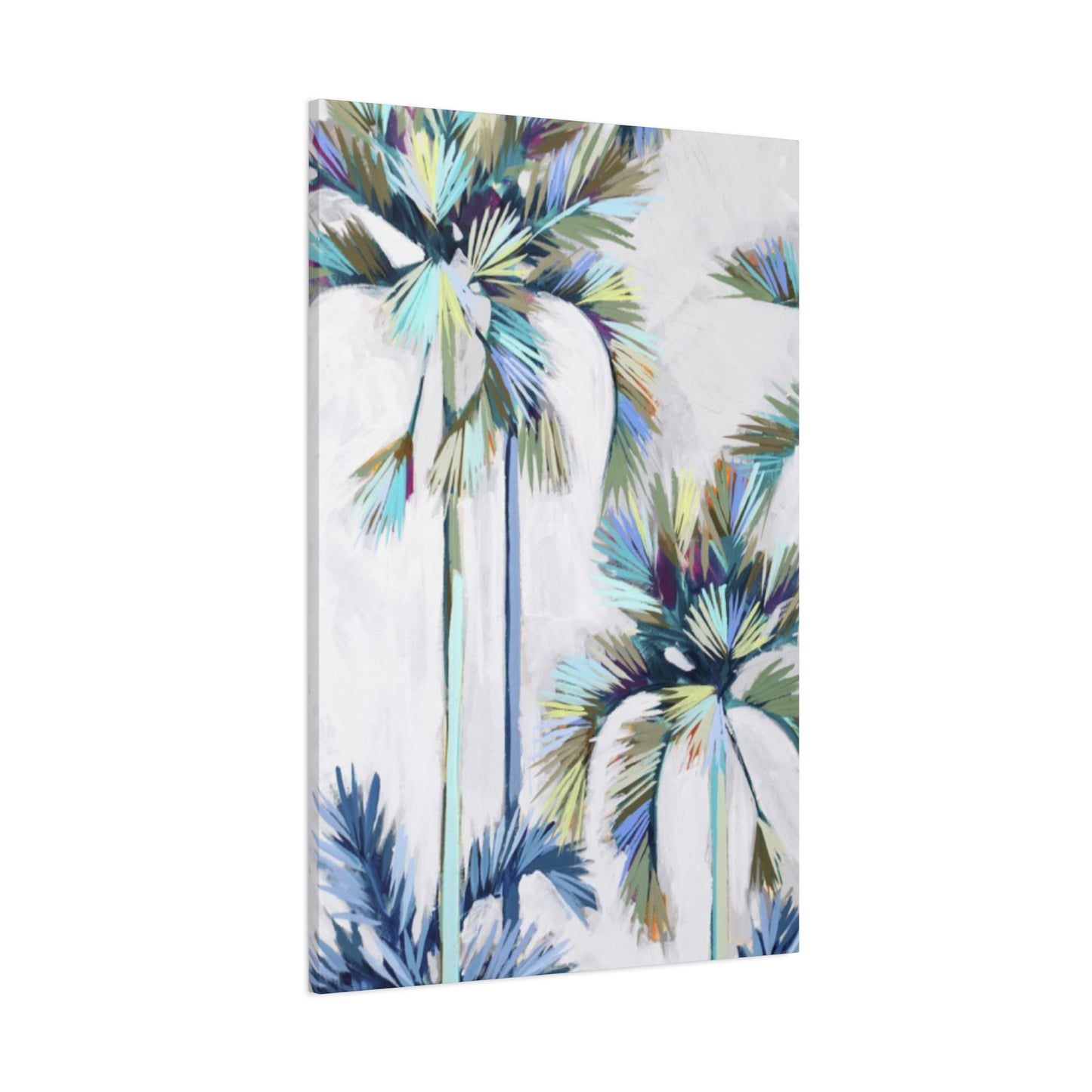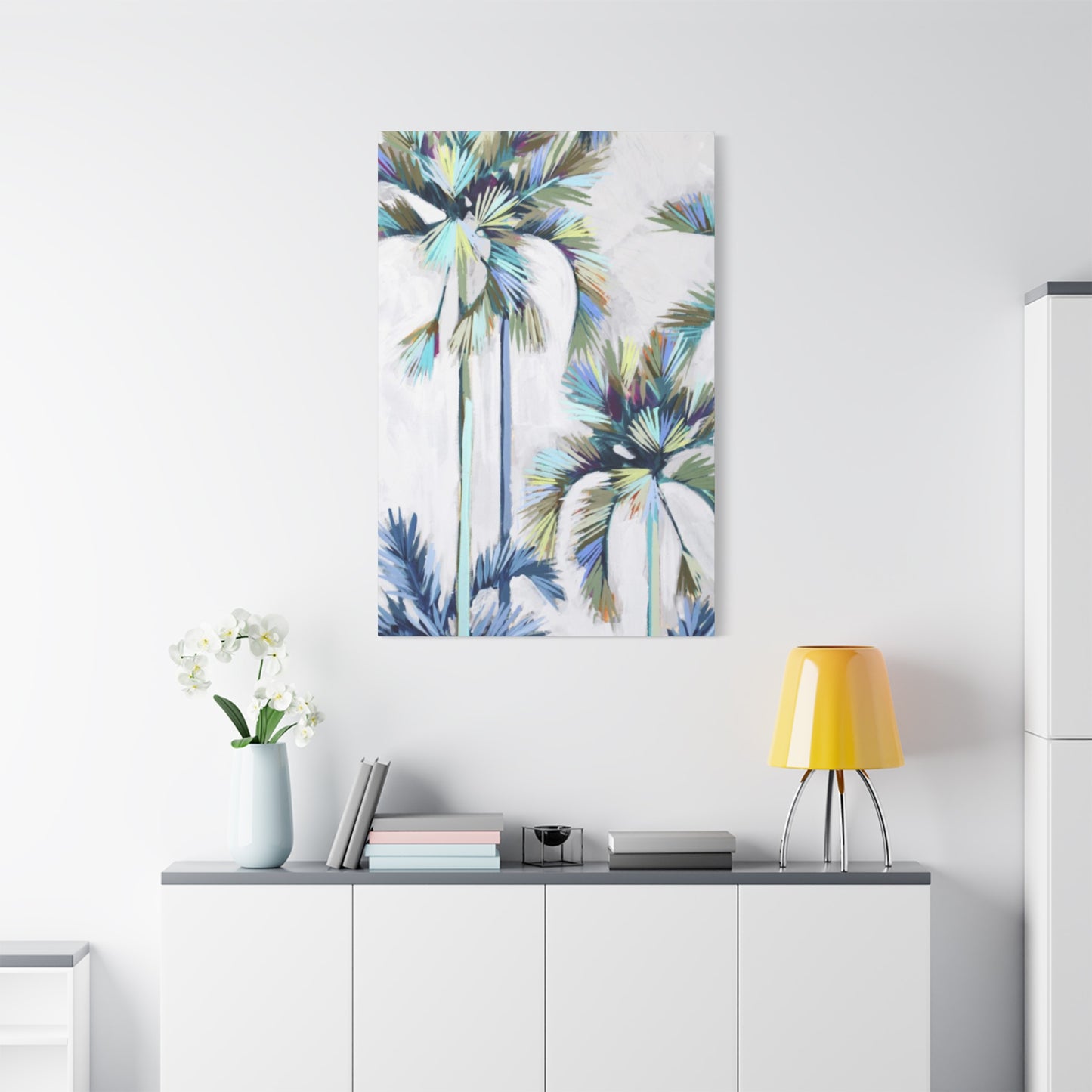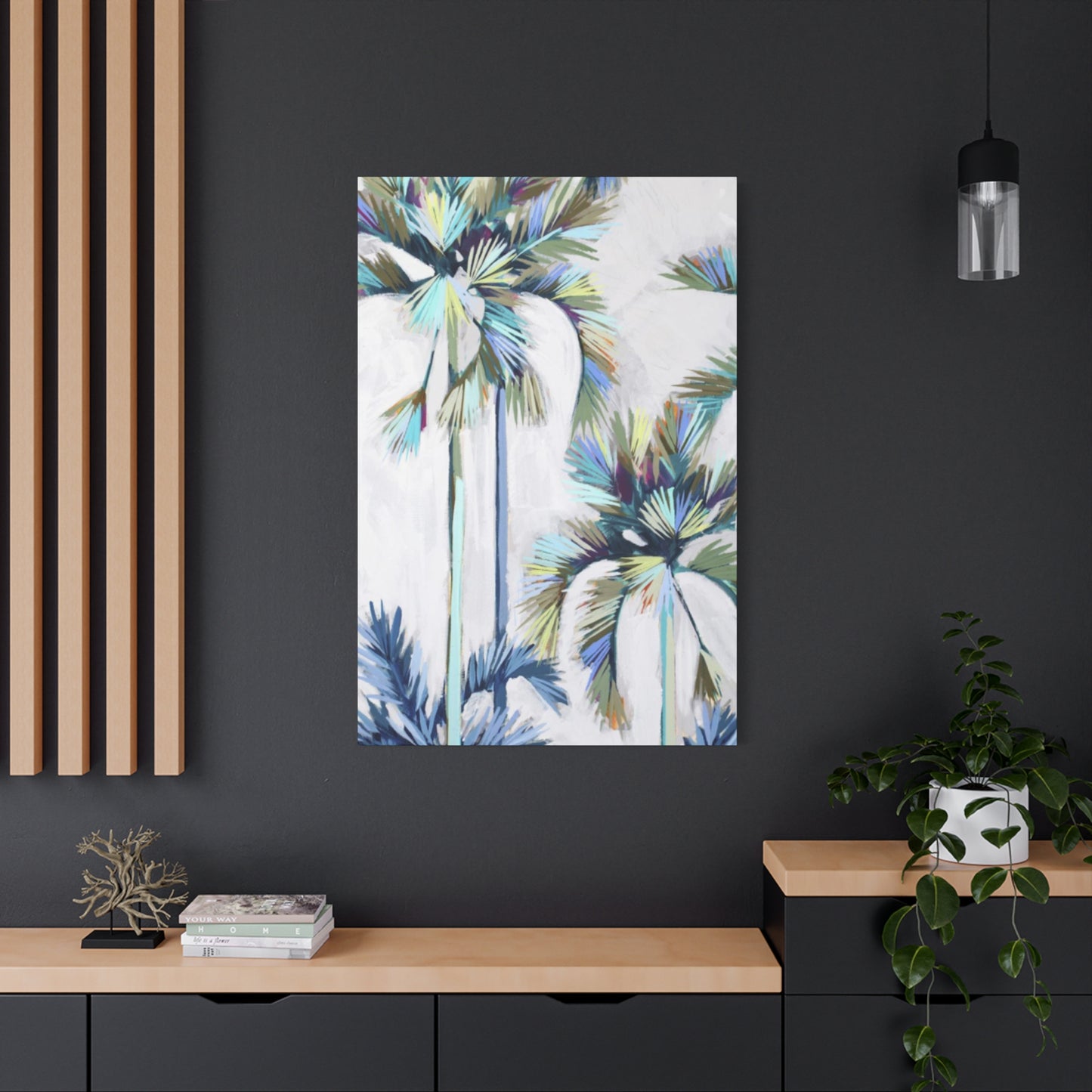Negative Image Palm Tree Wall art: Adding Tropical Elegance to Your Home Décor
The world of home décor has witnessed a remarkable transformation in recent years, with homeowners increasingly seeking unique and captivating pieces that reflect their personality while creating an inviting atmosphere. Among the most sought-after decorative elements, negative image palm tree wall art canvas prints have emerged as a sophisticated choice that combines tropical charm with contemporary artistic expression. These stunning pieces offer a fresh perspective on traditional tropical imagery, presenting familiar palm tree silhouettes in an inverted color scheme that creates depth, mystery, and visual intrigue.
Negative image palm tree canvas prints represent more than just decorative accessories; they serve as conversation starters, mood enhancers, and artistic statements that can completely transform the ambiance of any room. The technique of negative imaging, which reverses the typical light and dark values of a photograph or illustration, creates an almost ethereal quality that makes viewers pause and contemplate the beauty before them. When applied to palm tree imagery, this artistic approach transforms the familiar tropical symbol into something extraordinary and unexpected.
The popularity of these unique art pieces stems from their versatility and ability to complement various decorating styles. Whether your home features modern minimalist aesthetics, bohemian chic elements, coastal themes, or eclectic contemporary designs, negative image palm tree wall art seamlessly integrates into diverse environments while maintaining its distinctive character. The monochromatic nature of most negative image pieces allows them to serve as neutral yet striking focal points that don't compete with existing color schemes but rather enhance them.
Understanding the appeal of negative image palm tree wall art requires appreciating both the symbolic significance of palm trees and the artistic impact of negative imaging techniques. Palm trees have long been associated with relaxation, vacation memories, tropical paradise, and the carefree lifestyle that many people aspire to achieve. When these positive associations are combined with the sophisticated artistic treatment of negative imaging, the result is artwork that evokes both familiarity and novelty simultaneously.
The canvas print medium adds another layer of appeal to these artistic creations. Canvas provides a textured surface that enhances the visual depth of negative images, creating subtle variations in how light interacts with different areas of the print. This texture adds a tactile quality that makes the artwork feel more substantial and premium compared to traditional paper prints. Additionally, canvas prints offer excellent durability and can withstand the test of time when properly cared for, making them a worthwhile investment for homeowners seeking long-lasting decorative solutions.
The Artistic Appeal of Negative Imagery in Home Décor
Negative imagery represents one of the most intriguing artistic techniques available to contemporary artists and photographers. This method involves reversing the typical tonal values of an image, where what would normally appear light becomes dark, and dark elements become light. When applied to palm tree imagery, this technique creates a surreal and captivating effect that challenges viewers' perceptions while maintaining the recognizable silhouette that makes palm trees so universally appealing.
The psychological impact of negative imagery cannot be understated. Human brains are naturally programmed to process familiar shapes and forms, but when these familiar elements are presented in unexpected ways, it creates a moment of cognitive pause that draws attention and encourages closer examination. This phenomenon makes negative image palm tree wall art particularly effective as decorative pieces because they consistently capture and hold viewers' attention without being overwhelming or distracting.
From a design perspective, negative imagery offers several advantages that make it particularly suitable for home décor applications. The reversed tonal values often result in high contrast compositions that create strong visual impact even from a distance. This characteristic makes negative image palm tree canvas prints excellent choices for larger rooms or areas where the artwork needs to make a statement across significant distances. The stark contrast between light and dark elements also helps define the architectural features of palm trees, emphasizing their graceful curves and distinctive frond patterns.
The monochromatic nature of most negative image artwork provides exceptional versatility in terms of color coordination. Since these pieces typically rely on variations of black, white, and gray rather than specific color palettes, they can seamlessly integrate into virtually any existing décor scheme. This adaptability makes them particularly valuable for homeowners who enjoy changing their decorative elements seasonally or who prefer to invest in artwork that will remain relevant as their tastes evolve over time.
Another significant advantage of negative imagery lies in its ability to create mood and atmosphere. The dramatic contrast and unusual presentation can evoke feelings of mystery, sophistication, and artistic appreciation. Many homeowners find that negative image palm tree wall art helps create a more contemplative and serene environment, encouraging relaxation and peaceful reflection. This mood-enhancing quality makes these pieces particularly suitable for bedrooms, meditation areas, home offices, or any location where tranquility and focus are desired.
The artistic technique also allows for creative interpretation and personal meaning. While traditional palm tree imagery might evoke specific memories or associations, negative image versions invite viewers to create their own interpretations and emotional connections. This open-ended quality makes the artwork more personally meaningful and ensures that it continues to provide visual interest and emotional resonance over time.
Canvas Print Advantages for Palm Tree Artwork
The choice of canvas as a printing medium for negative image palm tree wall art offers numerous advantages that contribute to both the aesthetic appeal and practical benefits of these decorative pieces. Canvas has been the preferred medium for fine art reproduction for centuries, and modern printing technologies have made it possible to achieve museum-quality results that rival traditional painting techniques.
One of the primary advantages of canvas prints lies in their textural quality. Unlike smooth paper prints, canvas features a distinctive weave pattern that adds depth and dimension to the printed image. When negative image palm tree artwork is printed on canvas, this texture enhances the contrast between light and dark areas, creating subtle variations in how light reflects off different portions of the image. This textural element makes the artwork appear more dynamic and visually engaging, particularly when viewed from different angles or under varying lighting conditions.
The durability of canvas prints represents another significant advantage for homeowners investing in wall art. High-quality canvas materials are designed to resist fading, cracking, and deterioration when properly cared for. This longevity makes canvas prints an excellent choice for negative image palm tree wall art because the investment in these decorative pieces can provide years of visual enjoyment without requiring replacement or restoration. The inherent strength of canvas material also makes it less susceptible to damage from minor impacts or environmental factors that might affect other printing mediums.
Canvas prints offer superior color reproduction and detail retention compared to many alternative printing options. The absorbent nature of canvas allows inks to penetrate the material rather than simply sitting on the surface, resulting in richer colors and more precise detail reproduction. For negative image palm tree artwork, this means that the subtle gradations between light and dark areas are rendered with exceptional clarity, preserving the artistic intent and visual impact of the original design.
The weight and substantial feel of canvas prints contribute to their perceived value and premium quality. When properly stretched and mounted, canvas prints have a presence and gravitas that lighter printing mediums cannot match. This substantial quality makes negative image palm tree wall art feel like a significant decorative investment rather than a temporary or disposable decorative element. The professional appearance of well-executed canvas prints also helps elevate the overall aesthetic of any room where they are displayed.
Installation and display options for canvas prints provide additional advantages for homeowners. Canvas prints can be mounted with various framing options, from traditional wooden frames to contemporary floating mount systems. Many canvas prints are designed to be displayed without frames, with the printed image extending around the edges of the stretched canvas for a modern, gallery-like appearance. This flexibility allows homeowners to choose display methods that best complement their existing décor and personal preferences.
The maintenance requirements for canvas prints are generally minimal, making them practical choices for busy homeowners. Regular dusting with a soft, dry cloth is typically sufficient to maintain their appearance, and the durable nature of quality canvas materials means they can withstand normal household conditions without special environmental controls. This low-maintenance characteristic makes negative image palm tree canvas prints suitable for various locations throughout the home, including areas with moderate humidity or temperature variations.
Psychological Impact of Tropical Imagery in Living Environments
The incorporation of tropical imagery, particularly palm tree motifs, into residential environments creates profound psychological effects that extend far beyond simple aesthetic enhancement. Research in environmental psychology has consistently demonstrated that visual elements within our living environments significantly influence mood, stress levels, cognitive function, and overall well-being. Negative image palm tree wall art leverages these psychological principles while adding unique artistic elements that amplify the positive effects.
Palm trees carry deep-rooted psychological associations that tap into fundamental human desires for relaxation, escape, and connection with nature. These associations are often formed through personal experiences, cultural representations, and evolutionary connections to natural environments. When individuals view palm tree imagery, their minds frequently access memories of peaceful moments, vacation experiences, or idealized concepts of paradise. This automatic psychological response can help reduce stress hormones and promote feelings of calm and contentment within the home environment.
The negative imaging technique adds an additional layer of psychological impact by engaging viewers' cognitive processes in unique ways. The brain's pattern recognition systems work to interpret the familiar palm tree shape while simultaneously processing the unusual tonal presentation. This cognitive engagement creates what psychologists term "positive cognitive load" – mental activity that is stimulating without being stressful. This type of gentle mental engagement can help maintain cognitive sharpness while providing a meditative focus that many people find relaxing and centering.
Color psychology plays a crucial role in how negative image palm tree wall art affects viewers' emotional states. The predominantly monochromatic palette typically associated with negative imaging often incorporates various shades of black, white, and gray, which are known to promote feelings of sophistication, tranquility, and balance. These neutral tones help create psychological equilibrium within living environments by providing visual rest points that don't overstimulate the senses or compete with other environmental elements.
The presence of nature-inspired imagery, even in stylized or abstract forms, has been shown to activate what researchers call "soft fascination" – a gentle form of attention that allows the mind to rest and recover from directed attention fatigue. Negative image palm tree wall art provides this restorative effect while maintaining enough visual interest to prevent the artwork from becoming background noise. This balance between engagement and relaxation makes these pieces particularly beneficial for areas where people spend significant time, such as living rooms, bedrooms, or home offices.
Biophilic design principles, which emphasize the human connection to nature, support the inclusion of natural imagery in indoor environments as a means of improving psychological well-being. Even highly stylized representations of natural elements can trigger positive psychological responses associated with nature connection. Negative image palm tree wall art satisfies these biophilic needs while providing a sophisticated artistic interpretation that appeals to contemporary aesthetic sensibilities.
The contemplative quality of negative imagery can also support mindfulness practices and meditation. The unusual presentation of familiar forms encourages viewers to slow down and really observe the artwork, promoting the kind of present-moment awareness that is central to mindfulness techniques. This quality makes negative image palm tree wall art particularly valuable in creating peaceful retreats within the home where individuals can practice stress reduction and mental restoration.
Placement Strategies for Maximum Visual Impact
Strategic placement of negative image palm tree wall art can dramatically enhance its visual impact while ensuring that it serves its intended decorative and psychological functions effectively. The key to successful placement lies in understanding how these unique pieces interact with lighting, surrounding décor, and the functional aspects of different room areas.
Living room placement offers numerous opportunities for showcasing negative image palm tree canvas prints effectively. The focal wall behind a sofa or seating area provides an ideal location for larger pieces that can serve as statement elements. When placing artwork in this position, consider the viewing distance and ensure that the scale of the piece is appropriate for the room size and seating arrangement. For living rooms with high ceilings, vertically oriented negative image palm tree prints can help draw the eye upward and create a sense of grandeur while maintaining the tropical theme.
Bedroom environments benefit significantly from the calming properties of negative image palm tree wall art. Placement above the headboard creates a serene focal point that can promote relaxation and peaceful sleep. The monochromatic nature of most negative image pieces makes them particularly suitable for bedroom environments because they provide visual interest without introducing stimulating colors that might interfere with rest. Consider placing smaller companion pieces on adjacent walls to create a cohesive tropical theme throughout the bedroom.
Hallways and transitional areas present unique opportunities for creative placement of palm tree canvas prints. These areas often benefit from artwork that provides visual interest without overwhelming the limited floor area. Negative image palm tree pieces work particularly well in hallways because their high contrast elements remain visually engaging even when viewed briefly while passing through these transitional areas. Consider creating gallery-style arrangements with multiple smaller pieces to add rhythm and visual flow to longer hallway areas.
Home office environments can greatly benefit from the stress-reducing properties of tropical imagery. Placement of negative image palm tree wall art within the field of view from a desk position can provide periodic visual breaks that help reduce eye strain and mental fatigue. The contemplative quality of negative imagery can also support creative thinking and problem-solving by providing a peaceful visual anchor during periods of intense concentration.
Dining areas offer opportunities to create sophisticated atmospheric effects with negative image palm tree wall art. These pieces can help establish a relaxed, resort-like ambiance that enhances the dining experience and encourages leisurely meals. When placing artwork in dining areas, consider how it will appear under both natural and artificial lighting conditions, as dining rooms are often used during different times of day with varying lighting scenarios.
Bathroom and powder room placement requires special consideration for humidity and moisture levels, but when properly executed, negative image palm tree wall art can transform these functional areas into spa-like retreats. Choose canvas prints with appropriate protective treatments and ensure adequate ventilation to maintain the longevity of the artwork. The tropical theme works particularly well in bathroom environments because it reinforces the relaxation and self-care aspects of these personal retreat areas.
Lighting considerations play a crucial role in placement strategy for negative image artwork. Natural light can enhance the contrast effects and bring out subtle details in the negative imaging, but direct sunlight should be avoided to prevent fading and deterioration. Artificial lighting should be positioned to minimize glare while providing adequate illumination to showcase the artwork's details. Track lighting or picture lights can be used to create dramatic effects that emphasize the unique characteristics of negative imagery.
Styling Approaches for Different Home Aesthetics
The versatility of negative image palm tree wall art allows it to complement a wide range of decorating styles, each requiring specific approaches to maximize the artwork's contribution to the overall aesthetic vision. Understanding how to integrate these pieces into different style contexts ensures that they enhance rather than conflict with existing decorative elements.
Modern minimalist aesthetics provide an ideal backdrop for negative image palm tree canvas prints. The clean lines and uncluttered approach of minimalist design allow the artwork to serve as a carefully chosen focal point that doesn't compete with busy backgrounds or excessive decorative elements. In minimalist settings, choose larger-scale pieces that can make a significant impact without requiring multiple supporting elements. The monochromatic nature of negative imagery aligns perfectly with the restrained color palettes typically associated with minimalist design approaches.
Contemporary eclectic styles offer opportunities to incorporate negative image palm tree wall art as part of curated collections that showcase diverse artistic influences. These settings can accommodate multiple pieces of varying sizes and orientations, creating dynamic gallery walls that reflect personal taste and artistic appreciation. When working with eclectic aesthetics, consider how the tropical theme of palm tree imagery interacts with other cultural and artistic references within the overall design scheme.
Coastal and nautical decorating themes naturally embrace tropical imagery, making negative image palm tree wall art an excellent choice for these stylistic approaches. The sophisticated presentation of negative imaging elevates traditional coastal themes beyond typical beach house clichés, creating more refined and artistic interpretations of seaside living. Pair these pieces with natural materials like driftwood frames or rope details to reinforce the coastal connection while maintaining artistic sophistication.
Bohemian and eclectic styles can incorporate negative image palm tree wall art as part of layered, globally-inspired decorative schemes. The artistic nature of negative imagery fits well with the bohemian appreciation for unique and creative expressions. Consider combining these pieces with textiles, plants, and artifacts that reinforce the tropical theme while maintaining the relaxed, worldly aesthetic that characterizes bohemian décor approaches.
Industrial and urban loft aesthetics can benefit from the softening effect of tropical imagery while maintaining their edgy, contemporary character. Negative image palm tree wall art provides organic contrast to the hard surfaces and mechanical elements typical of industrial design. The high contrast nature of negative imagery complements the bold, dramatic elements often found in industrial settings while introducing a humanizing natural element.
Traditional and transitional decorating styles can incorporate negative image palm tree wall art by emphasizing its artistic and sophisticated qualities rather than its tropical associations. Frame these pieces in classic profiles and pair them with traditional furnishings to create interesting juxtapositions between classical and contemporary elements. The neutral color palette of negative imagery makes it particularly adaptable to traditional settings without conflicting with established color schemes.
Scandinavian design principles emphasize simplicity, functionality, and connection to nature, making negative image palm tree wall art a surprisingly appropriate choice for this aesthetic approach. The monochromatic presentation aligns with Scandinavian color preferences, while the natural subject matter satisfies the style's emphasis on bringing outdoor elements indoors. Choose pieces with clean, simple presentation methods that maintain the uncluttered aesthetic central to Scandinavian design philosophy.
Color Coordination and Palette Integration
Successfully integrating negative image palm tree wall art into existing color schemes requires understanding how monochromatic artwork interacts with various color palettes and how to leverage these interactions for maximum decorative impact. The predominantly neutral nature of negative imagery provides unique opportunities for color coordination that can enhance both the artwork and the surrounding décor elements.
Neutral color palettes create ideal environments for negative image palm tree wall art because they allow the artwork's contrast and textural qualities to take center stage. In rooms featuring beiges, grays, whites, and other neutral tones, these pieces can serve as sophisticated focal points that add visual interest without disrupting the serene, balanced atmosphere that neutral palettes typically create. The key to success with neutral coordination lies in varying the textures and materials surrounding the artwork to prevent the overall scheme from appearing flat or monotonous.
Bold and vibrant color schemes can benefit from the grounding effect of monochromatic negative image artwork. When rooms feature strong colors like deep blues, rich greens, or warm oranges, negative image palm tree wall art can provide visual relief and prevent color overload. The neutral nature of these pieces allows them to complement virtually any color while providing a sophisticated counterpoint to more saturated decorative elements. This approach is particularly effective in rooms where the goal is to maintain energy and vibrancy while ensuring visual balance.
Earth-tone palettes naturally complement tropical imagery, making negative image palm tree wall art an excellent choice for rooms featuring browns, tans, deep greens, and other nature-inspired colors. The organic subject matter of palm trees reinforces the natural theme established by earth-tone palettes, while the negative imaging technique adds contemporary sophistication to what might otherwise be predictable decorative approaches. Consider incorporating natural materials and textures to further strengthen the connection between the artwork and the overall color scheme.
Monochromatic color schemes provide opportunities to create subtle, sophisticated environments where negative image palm tree wall art can shine as both artistic expression and decorative element. In rooms featuring various shades of a single color family, these pieces can introduce textural contrast and visual anchoring without disrupting the cohesive color flow. This approach works particularly well in bedrooms and meditation areas where the goal is to create calming, harmonious environments.
Cool color palettes featuring blues, greens, and purples can be beautifully complemented by the graphic quality of negative image palm tree artwork. The contrast between the cool surrounding colors and the neutral tones of the artwork creates dynamic visual tension that keeps the room from feeling too cold or sterile. This combination works particularly well in contemporary and modern settings where the goal is to create sophisticated, slightly dramatic environments.
Warm color schemes incorporating reds, oranges, and yellows can benefit from the cooling effect of monochromatic negative image artwork. These pieces help balance the emotional warmth of surrounding colors while maintaining the inviting, energetic atmosphere that warm palettes create. The tropical subject matter of palm trees naturally complements the sunny, vacation-like feelings associated with warm color schemes while adding artistic depth through the negative imaging technique.
Seasonal color coordination allows homeowners to maintain their negative image palm tree wall art year-round while adapting surrounding elements to reflect changing seasons. The neutral nature of these pieces means they work equally well with the fresh greens and bright colors of spring, the warm, saturated tones of summer, the rich earth tones of fall, and the crisp whites and cool tones of winter decorative schemes.
Lighting Techniques to Enhance Negative Image Effects
Proper lighting plays a crucial role in showcasing the unique characteristics of negative image palm tree wall art and can dramatically affect how these pieces appear and function within residential environments. Understanding how different lighting approaches interact with negative imagery allows homeowners to optimize their artwork's visual impact and ensure that it contributes effectively to the overall ambiance of each area.
Natural lighting provides the most dynamic and ever-changing illumination for negative image palm tree canvas prints. The way natural light moves across these pieces throughout the day creates an evolving visual experience that keeps the artwork fresh and engaging. Morning light tends to create softer contrasts that emphasize the subtle tonal variations within negative imagery, while afternoon light often enhances the dramatic contrast between light and dark elements. Positioning artwork to take advantage of natural light patterns can create daily rhythms that reinforce the peaceful, meditative qualities associated with tropical imagery.
Indirect natural lighting offers the best conditions for viewing negative image artwork because it minimizes glare and harsh shadows while providing sufficient illumination to showcase detail and contrast. East or north-facing windows typically provide this type of gentle, consistent natural light that enhances rather than overwhelms the subtle effects of negative imaging. When direct sunlight is unavoidable, consider using sheer curtains or blinds to diffuse the light and prevent potential fading of the canvas print materials.
Artificial lighting systems offer precise control over how negative image palm tree wall art appears and can be adjusted to create different moods and effects depending on the time of day or intended use of the room. Track lighting systems provide excellent flexibility for highlighting artwork because they can be positioned and adjusted to minimize glare while maximizing the visual impact of the pieces. LED spotlights with adjustable beam angles work particularly well for negative image artwork because they can be focused to emphasize specific areas of interest within the composition.
Ambient lighting creates the overall illumination level within a room and significantly affects how negative image artwork integrates with the surrounding environment. Soft, diffused ambient lighting helps create the relaxed, peaceful atmosphere that complements tropical imagery while ensuring that the artwork remains visible and engaging. Consider using multiple light sources at different levels to create layered lighting that provides both functionality and aesthetic appeal.
Accent lighting specifically designed to highlight artwork can transform negative image palm tree wall art into dramatic focal points within room designs. Picture lights mounted directly on or near the artwork provide focused illumination that emphasizes the textural qualities of canvas prints and enhances the contrast effects of negative imagery. Modern LED picture lights offer energy efficiency and minimal heat production, making them safe for use with canvas artwork while providing professional-quality illumination.
Task lighting in areas where negative image palm tree wall art is displayed should be carefully planned to avoid creating glare or shadows that interfere with viewing the artwork. Table lamps, floor lamps, and other task lighting sources should be positioned to complement rather than compete with the artwork's lighting requirements. This coordination ensures that the artwork remains a positive visual element even when the room is being used for specific activities that require additional illumination.
Color temperature considerations for artificial lighting significantly affect how negative image artwork appears and feels within residential environments. Warm color temperature lighting (2700K-3000K) creates cozy, relaxing atmospheres that complement the peaceful associations of tropical imagery, while cooler color temperatures (3500K-4000K) can enhance the contemporary, sophisticated aspects of negative imaging techniques. Many modern LED lighting systems offer adjustable color temperatures, allowing homeowners to customize the appearance of their artwork for different occasions and preferences.
Dimming capabilities provide additional control over how negative image palm tree wall art contributes to room ambiance. The ability to adjust lighting levels allows these pieces to serve different functions throughout the day, from providing visual interest during active periods to creating peaceful, meditative focal points during relaxation times. Smart lighting systems can even be programmed to automatically adjust throughout the day to optimize the artwork's appearance and contribution to the overall room atmosphere.
Size Selection and Proportion Guidelines
Selecting the appropriate size for negative image palm tree wall art requires careful consideration of room dimensions, viewing distances, ceiling heights, and the intended visual impact of the pieces. Proper proportion relationships between artwork and surrounding elements ensure that these decorative investments contribute effectively to overall design goals while avoiding common sizing mistakes that can diminish their impact.
Large-scale pieces measuring 36 inches or larger in either dimension work best in rooms with substantial wall areas and adequate viewing distances. Living rooms, master bedrooms, and dining areas typically provide appropriate settings for large negative image palm tree canvas prints because they offer sufficient wall area and viewing distances to accommodate the visual impact of substantial artwork. When selecting large pieces, consider the height of ceilings and the scale of surrounding furniture to ensure proportional harmony throughout the room.
Medium-sized pieces ranging from 24 to 36 inches provide versatility for various room applications while maintaining significant visual presence. These dimensions work well in guest bedrooms, home offices, hallways, and as part of gallery wall arrangements where multiple pieces are combined to create larger visual statements. Medium-sized negative image palm tree wall art offers excellent balance between impact and adaptability, making it a popular choice for homeowners who may need to relocate pieces as their decorating needs evolve.
Small-scale pieces under 24 inches serve important roles in creating intimate displays, filling specific decorative niches, and as companion pieces to larger artwork installations. These sizes work particularly well in powder rooms, reading nooks, stairway landings, and as part of curated collections that showcase multiple related pieces. Small negative image palm tree prints can also be effective when grouped in series to create rhythm and visual flow across longer wall areas.
Ceiling height considerations significantly affect how artwork proportions appear within room contexts. Rooms with standard 8-foot ceilings benefit from horizontally oriented pieces that emphasize width rather than height, preventing the artwork from making ceilings appear lower. Higher ceilings can accommodate vertically oriented pieces that draw the eye upward and help fill the additional vertical visual area. Very high ceilings may require larger pieces or groupings to maintain appropriate scale relationships.
Furniture scale relationships play crucial roles in determining appropriate artwork sizes for different room areas. Above seating areas, negative image palm tree wall art should typically measure between two-thirds and three-quarters of the furniture width to create pleasing proportional relationships. This guideline ensures that the artwork feels substantial enough to anchor the furniture grouping while avoiding overwhelming smaller-scale pieces or appearing insignificant relative to larger furniture items.
Viewing distance calculations help determine how large artwork needs to be to create appropriate visual impact from typical seating or standing positions within each room. As a general rule, artwork should be large enough to be clearly appreciated from the farthest typical viewing position while not appearing overwhelming from closer distances. For negative image pieces, this consideration is particularly important because the contrast effects and detail elements need adequate size to be properly appreciated.
Room function considerations influence size selection for negative image palm tree wall art based on how different areas are used and experienced. Bedrooms often benefit from substantial pieces that create peaceful focal points for relaxation, while hallways may require smaller pieces that provide visual interest without overwhelming the transitional nature of these areas. Home offices can accommodate various sizes depending on whether the artwork is intended as inspiration during work periods or as a relaxing focal point for breaks.
Multiple piece arrangements offer opportunities to create substantial visual impact through strategic grouping of smaller individual pieces. This approach provides flexibility for future rearrangement while allowing homeowners to build their collections gradually over time. When planning multiple piece installations, consider how the negative image palm tree theme can be varied through different compositions, orientations, or complementary subjects while maintaining overall cohesion.
Framing Options and Presentation Methods
The presentation method chosen for negative image palm tree wall art significantly affects both its visual impact and its integration with surrounding décor elements. Contemporary canvas printing technologies offer various presentation options that can enhance the artwork's aesthetic appeal while protecting the investment and ensuring long-term durability.
Gallery wrap presentation involves stretching the canvas print around a wooden frame so that the image extends onto the sides of the frame, eliminating the need for traditional framing. This modern presentation method works particularly well for negative image palm tree wall art because it creates clean, contemporary appearance that emphasizes the artwork itself rather than decorative framing elements. Gallery wraps can be hung directly on wall mounting systems, creating floating effects that add to the sophisticated, professional appearance of the pieces.
Traditional framing approaches offer opportunities to integrate negative image palm tree wall art with classic decorating styles while providing additional protection for the canvas material. Wood frames in natural finishes complement the organic nature of palm tree imagery while allowing the negative imaging effects to remain the focal point. Metal frames in sleek, contemporary profiles can enhance the artistic sophistication of negative imagery while providing durable, long-lasting protection for the canvas prints.
Floating frame systems create the appearance that the canvas print is suspended within the frame rather than mounted against it. This presentation method adds depth and visual interest while maintaining the modern, gallery-like aesthetic that many homeowners prefer for contemporary artwork. Floating frames work particularly well for negative image pieces because they emphasize the artwork's presence without competing for attention with elaborate framing details.
Shadow box presentation methods provide additional depth and dimensional interest that can enhance the contemplative qualities of negative image palm tree wall art. By mounting the canvas print within a deeper frame structure, shadow box presentation creates subtle lighting effects and visual layering that reinforce the mysterious, sophisticated nature of negative imagery. This approach works particularly well for meditation areas and quiet retreats where the goal is to create peaceful, thought-provoking environments.
Matting options for framed presentations allow for color coordination and proportional adjustments that can enhance the artwork's integration with surrounding décor. Neutral mats in white, cream, or gray tones complement the monochromatic nature of negative imagery while providing visual breathing room around the composition. Colored mats can be used to coordinate with room color schemes, though this approach should be used carefully to avoid overwhelming the subtle effects of negative imaging.
Protective glazing considerations for framed negative image palm tree wall art include options for UV protection, anti-reflective coatings, and conservation-quality materials that help preserve the artwork's appearance over time. Museum-quality glazing provides excellent protection while maintaining optimal viewing clarity, making it a worthwhile investment for valuable pieces or artwork displayed in areas with significant natural light exposure. Anti-reflective coatings help minimize glare and maintain viewing quality under various lighting conditions.
Multi-panel presentation methods allow larger negative image compositions to be divided across multiple canvas panels, creating dynamic installations that can be arranged in various configurations. Triptych and polyptych presentations work particularly well for palm tree imagery because they can showcase different aspects of tropical scenery while maintaining overall compositional unity. These multi-panel approaches also provide flexibility for installation in areas where single large pieces might be impractical.
Hardware selection for hanging negative image palm tree wall art should prioritize both security and aesthetic considerations. Heavy-duty hanging systems ensure that valuable canvas prints remain securely mounted while minimizing visible hardware that might detract from the artwork's appearance. Professional hanging systems often include adjustable components that allow for precise positioning and easy releveling if needed over time.
Maintenance and Care Instructions
Proper maintenance and care of negative image palm tree wall art canvas prints ensures that these decorative investments continue to provide visual enjoyment and artistic value for many years. Understanding the specific requirements for canvas print care helps homeowners protect their artwork while maintaining its appearance and integrity over time.
Regular dusting represents the most important routine maintenance task for canvas prints. Use a soft, dry cloth or a clean, dry paintbrush to gently remove dust and debris from the canvas surface. Work in light, consistent strokes following the weave pattern of the canvas to avoid disturbing the printed surface. Avoid using feather dusters or cloths that might leave residue or scratch the printed surface. For pieces displayed in areas with higher dust accumulation, monthly dusting may be necessary to maintain optimal appearance.
Environmental control considerations help preserve the quality and longevity of negative image palm tree wall art. Maintain consistent temperature and humidity levels to prevent canvas expansion and contraction that could lead to cracking or warping. Ideal conditions include temperatures between 65-75°F and relative humidity levels between 45-55%. Avoid displaying canvas prints in areas with extreme temperature fluctuations, such as near heating vents, fireplaces, or exterior doors where outdoor temperature changes might affect the artwork.
Direct sunlight exposure poses the greatest threat to canvas print longevity and should be avoided whenever possible. UV radiation can cause fading and deterioration of both the canvas material and printed inks over time. If artwork must be displayed in areas with natural light exposure, consider using UV-filtering window treatments or protective glazing to minimize potential damage. Even indirect natural light can cause gradual fading over extended periods, so periodic rotation of artwork can help ensure even aging.
Cleaning procedures for canvas prints require special care to avoid damaging the printed surface or canvas material. For minor stains or marks, use a slightly damp cloth with distilled water to gently blot the affected area. Avoid rubbing or scrubbing motions that might disturb the printed surface or push stains deeper into the canvas weave. For more significant cleaning needs, consult professional art restoration services rather than attempting aggressive cleaning methods that could cause permanent damage.
Storage considerations become important if negative image palm tree wall art needs to be temporarily removed from display. Store canvas prints in dry, temperature-controlled environments away from direct light sources. Avoid folding or rolling canvas prints, as these actions can cause permanent creases or cracks in the printed surface. If temporary storage is necessary, lay pieces flat with acid-free tissue paper between multiple pieces to prevent surface contact that might cause transfer or adhesion.
Professional conservation services may be necessary for valuable pieces or artwork showing signs of deterioration. Qualified art conservators can address issues such as fading, cracking, or structural problems with canvas prints while preserving their artistic integrity. Regular professional assessment can help identify potential problems early and prevent minor issues from developing into more serious conservation challenges.
Handling procedures should minimize direct contact with the printed surface of canvas artwork. When moving or adjusting pieces, handle them by the frame or stretcher bars rather than touching the canvas surface directly. Clean hands are essential when handling artwork, as oils and dirt from skin contact can cause permanent staining or deterioration over time. Consider wearing clean cotton gloves when handling valuable pieces to eliminate the risk of contamination from skin contact.
Insurance and documentation considerations help protect the financial investment in negative image palm tree wall art collections. Maintain records of purchase information, including receipts, certificates of authenticity, and professional appraisals if applicable. Photograph artwork periodically to document its condition and assist with insurance claims if damage or loss occurs. Review homeowner's insurance policies to ensure adequate coverage for artwork collections and consider additional riders if needed for valuable pieces.
Creating Gallery Walls with Multiple Pieces
Gallery wall arrangements featuring negative image palm tree wall art provide opportunities to create dynamic, personalized displays that showcase multiple pieces while maintaining thematic coherence and visual harmony. Successfully designing gallery walls requires understanding composition principles, spacing guidelines, and coordination strategies that ensure individual pieces work together effectively as unified decorative statements.
Planning and layout development for gallery walls should begin with paper templates cut to match the exact dimensions of each piece of artwork. This approach allows for experimental arrangement on the wall surface before committing to final placement positions. Consider the overall shape and proportions of the available wall area, as well as how the gallery wall will relate to furniture placement and room traffic patterns. Sketch or photograph different arrangement options to evaluate how various compositions affect the visual balance and impact of the overall display.
Thematic coherence in gallery walls featuring negative image palm tree wall art can be maintained through consistent subject matter while allowing for variation in composition, orientation, and scale. Consider including pieces that showcase different aspects of tropical scenery or various treatments of palm tree imagery to create visual interest while maintaining the overarching theme. The monochromatic nature of negative imagery naturally provides color consistency that helps unify diverse compositions within gallery wall arrangements.
Conclusion
Negative image palm tree wall art canvas prints bring a fresh and sophisticated twist to tropical décor, elevating your home with striking contrasts and modern aesthetics. By using the negative image technique—where the usual colors are inverted or transformed—these prints transform familiar palm tree silhouettes into bold, eye-catching pieces that add depth and intrigue to any room. This approach blends tropical vibes with contemporary art sensibilities, creating a unique visual statement that complements a variety of interior styles.
One of the main appeals of negative image palm tree art lies in its ability to reinvent a classic motif. While palm trees typically evoke warmth, relaxation, and beachside bliss, the negative image style adds an element of mystery and modernity. The reversed colors and stark contrasts create a dramatic effect that draws attention and invites viewers to see tropical imagery in a new light. This makes the art both timeless and trendy, perfect for those who want their décor to feel both familiar and fresh.
From a design perspective, these canvas prints are incredibly versatile. The monochromatic or limited color palettes often used in negative imaging blend well with minimalist, industrial, or modern interiors, while also offering a striking counterpoint in more eclectic or bohemian settings. Whether placed in living rooms, bedrooms, or office spaces, negative image palm tree art adds a sophisticated edge without overwhelming the overall décor.
Moreover, palm trees symbolize growth, resilience, and tranquility—qualities that resonate deeply when rendered in such an innovative way. The negative image technique emphasizes contrast and balance, reflecting not just a visual style but a harmony of opposites that can inspire reflection and creativity.
In conclusion, negative image palm tree wall art canvas prints provide an elegant and contemporary way to infuse tropical sophistication into your home décor. They reimagine a beloved natural symbol with bold artistry, offering pieces that are both visually compelling and meaningful. By embracing this unique style, you create a space that is stylish, inviting, and distinctly modern.

















